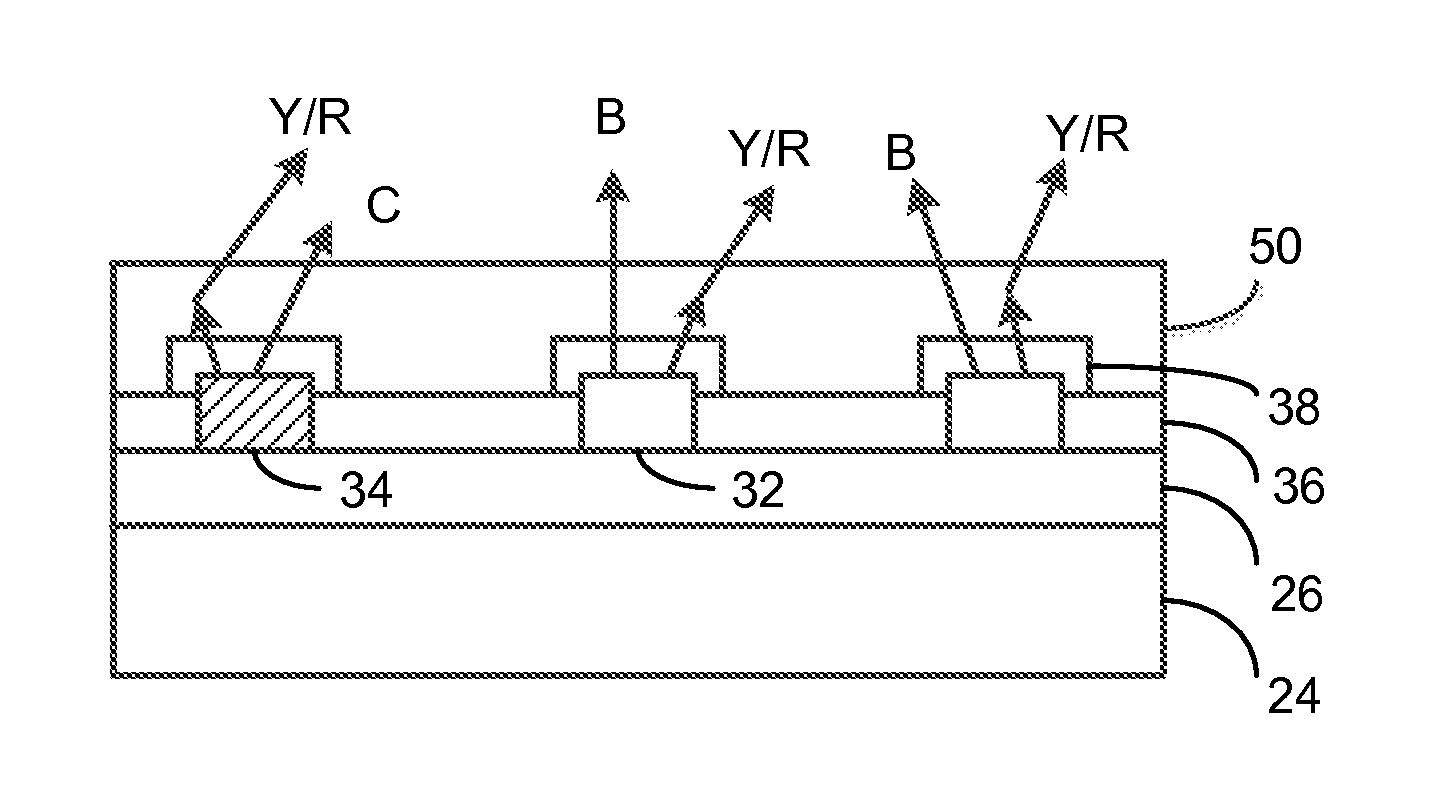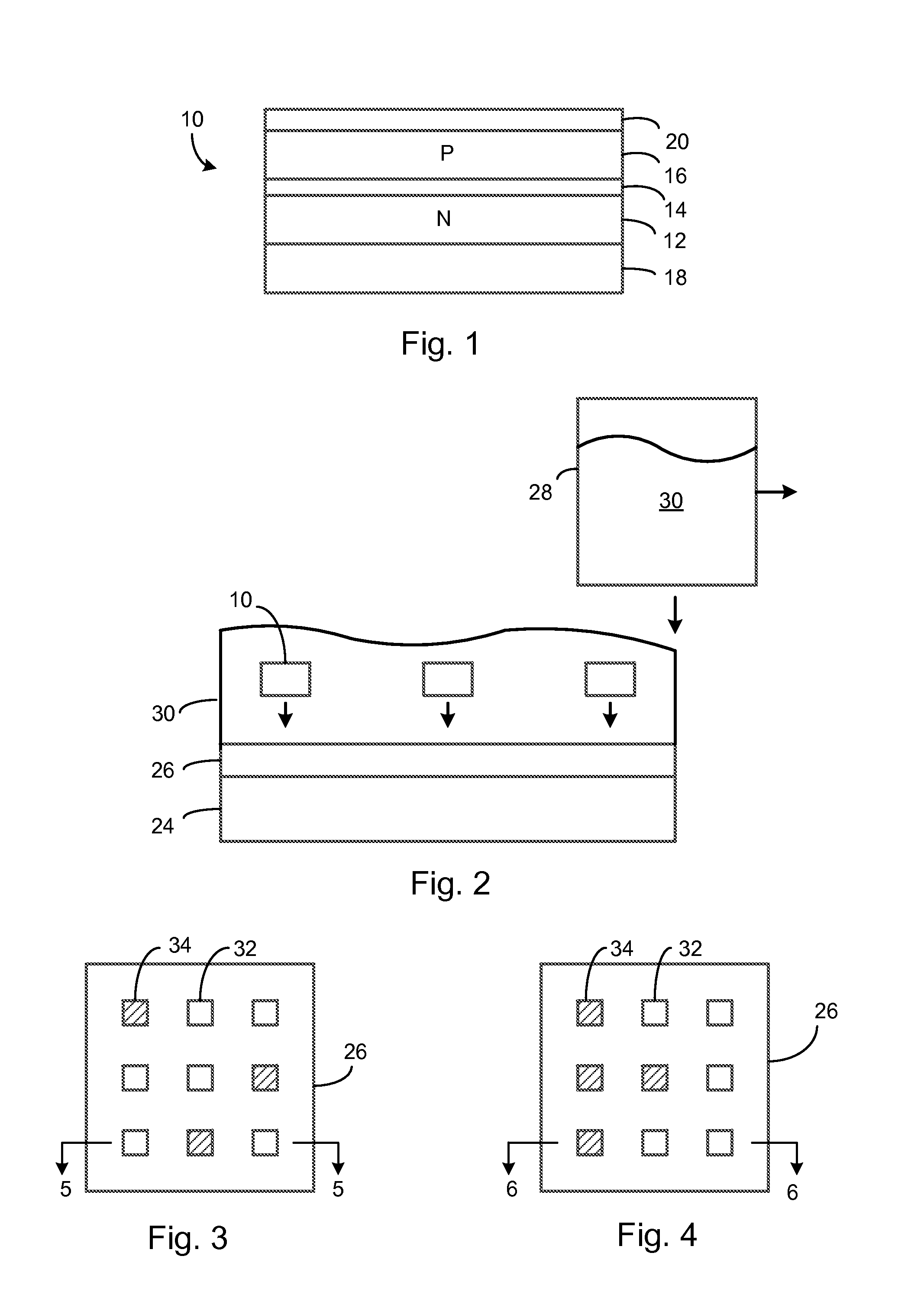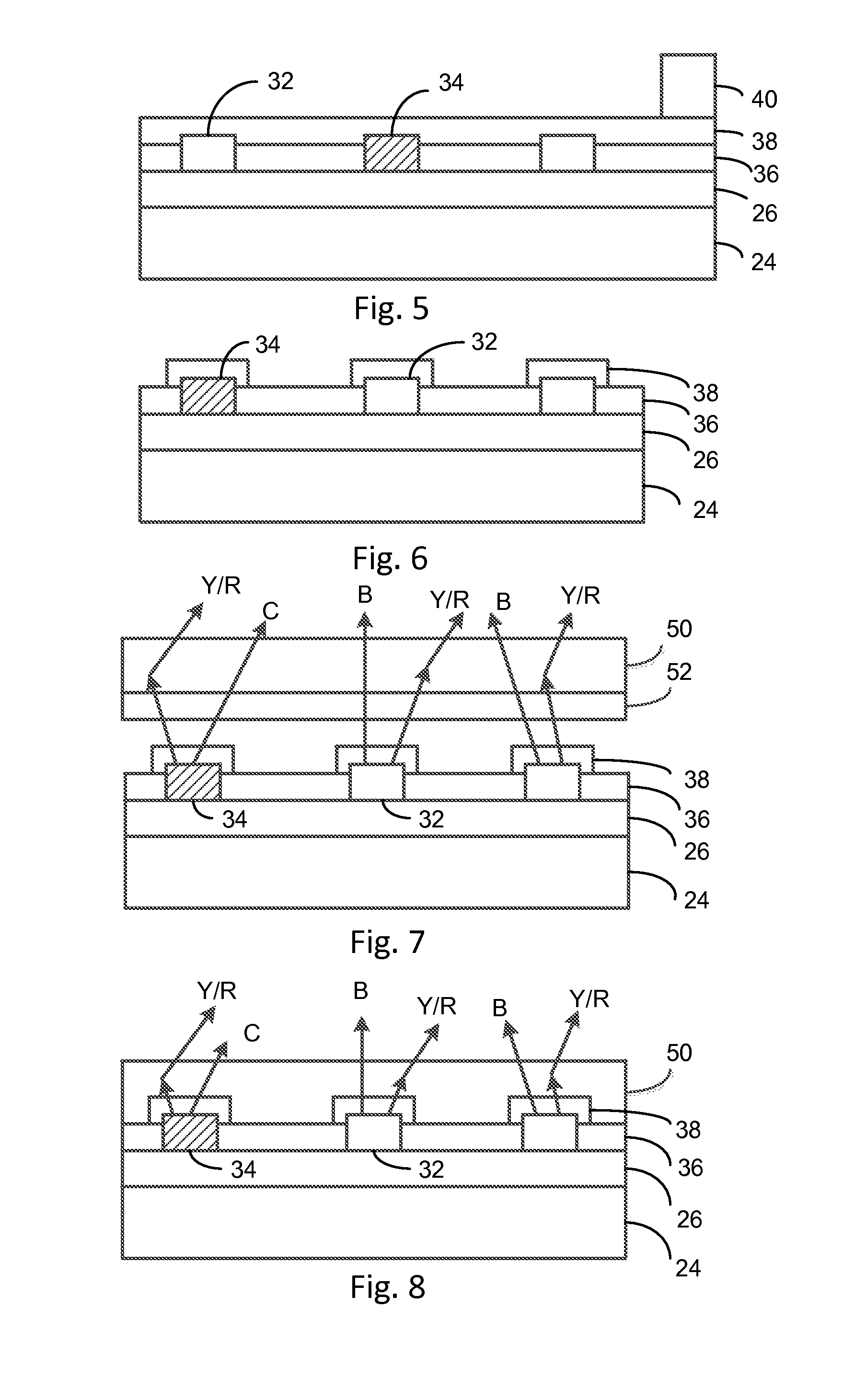LED lamp using blue and cyan LEDs and a phosphor
a technology of led lamps and leds, which is applied in the field of phosphor-converted led lamps, can solve the problems of inability to meet the requirements add significant expense, and produce relatively poor color rendering of dichromatic light sources, and achieve the effects of increasing the cri of light emission, reducing the cost of lighting and heating equipment, and efficient excitation
- Summary
- Abstract
- Description
- Claims
- Application Information
AI Technical Summary
Benefits of technology
Problems solved by technology
Method used
Image
Examples
Embodiment Construction
[0039]FIG. 1 is a cross-sectional view of a micro-LED chip 10 emitting a peak wavelength of either 450 nm or 490 nm, depending on the structure of its active layer. The LED chip 10 is manufactured as part of a wafer containing many thousands of LEDs. The wafer may be broken along etched lines into small LED chips with sides approximately 25 microns. Since the growth substrate is removed, the chip 10 may be only a few microns thick, such as 3-10 microns thick. Forming GaN-based LEDs to emit light with peak wavelengths of 450 nm and 490 nm is well known.
[0040]Typically, the GaN-based LED semiconductor layers are grown on a sapphire substrate or other suitable growth substrate. N-type layers 12 are epitaxially grown, followed by an active layer 14, followed by p-type layers 16. The growth substrate is then removed, and ohmic contact to the n-type layers 12 is made by depositing a large, reflective metal alloy (or multiple metal layers) on the n-layers 12 to form a bottom electrode 18. ...
PUM
 Login to View More
Login to View More Abstract
Description
Claims
Application Information
 Login to View More
Login to View More - R&D
- Intellectual Property
- Life Sciences
- Materials
- Tech Scout
- Unparalleled Data Quality
- Higher Quality Content
- 60% Fewer Hallucinations
Browse by: Latest US Patents, China's latest patents, Technical Efficacy Thesaurus, Application Domain, Technology Topic, Popular Technical Reports.
© 2025 PatSnap. All rights reserved.Legal|Privacy policy|Modern Slavery Act Transparency Statement|Sitemap|About US| Contact US: help@patsnap.com



